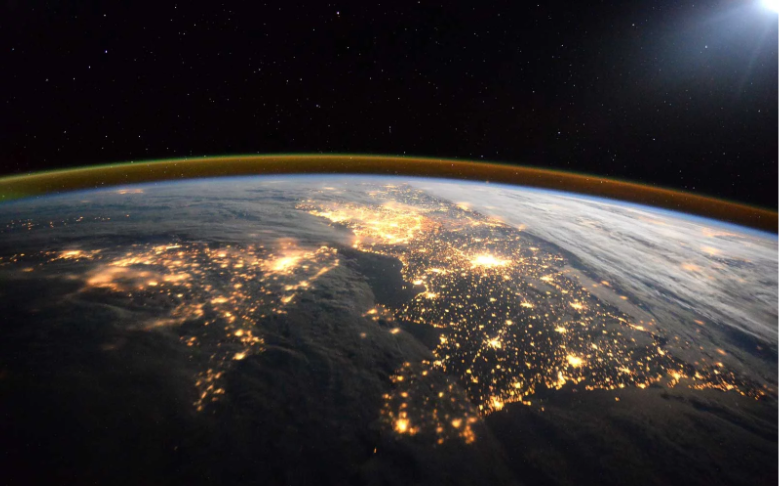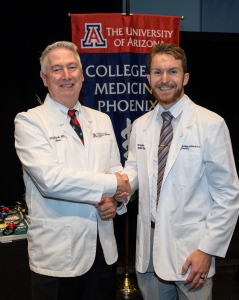When the Wright Brothers first achieved motorized flight in 1903, the response to their achievement was lackluster. In fact, when propositioned for contracts regarding aeroplanes, the U.S. government responded to the brothers with a letter of “no interest”. One hundred and eighteen years later, the wealthiest people in the world are paying top dollar to achieve flight beyond our atmosphere. In less than 120 years, the world went from “no interest” to the dawn of commercial space travel.
Through the 1960s and 70s all ventures into space were in the realm of government work – NASA, the European Space Agency, and the Soviet Space Program being at the forefront. However, private businesses entered the realm in the mid 1980’s, and in the years since the private sector has expanded to 17 non-government agencies capable of space flight. During the period from 2001 to 2009, seven space tourists made eight space flights aboard a Russian Soyuz spacecraft to the International Space Station with a price tag of US$20–25 million per trip. By 2007, space tourism was thought to be one of the earliest markets that would emerge for commercial spaceflight. Richard Branson’s Virgin Galactic was set to commence its first commercial flights in 2015, selling 700 tickets at a price of $200,000, however the project later fell through. Jeff Bezos followed this up by establishing his company, Blue Origin, which successfully launched with four passengers on July 20, 2021, and reached an altitude of 107 km (66 mi). This culminated in the first all civilian space flight on September 15th, 2021 – Inspiration4 via Elon Musk’s SpaceX. Elon Musk and SpaceX are perhaps the most well known drivers of commercial space travel, with their main ethos being to make life multi-planetary.
However, space expert Chris Daehnick notes uncertainty as to the viability of commercial space travel given its inaccessibility due to cost. On average, NASA spends an average of $152 million per launch. However, Musk has stated that he can dramatically reduce this cost to $2 million per launch by utilizing reusability and SpaceX’s massive Starship – capable of carrying up to 100 passengers. This is an ambitious and long-term goal however. Currently, SpaceX’s smaller Falcon 9 costs $62 million per launch.
Cost isn’t the only challenge in the way of making the cosmos available to everyday people. Limited information exists regarding the effect of spaceflight-related stressors like acceleration, microgravity, altered atmospheric pressure, and breathing gas mixtures on individuals with underlying medical conditions. No standardized medical criteria exist for screening or selecting spaceflight participants. Unlike professional flight crew which requires a Class II airman’s medical certificate, there is no similar requirement for fitness to fly for space tourists. Where the law is silent or lacking, the Federal Aviation Administration’s Recommended Practices for Human Space Flight Occupant Safety, published in 2014, can provide general guidance. Here the FAA recommends a spaceflight participant receive a medical consultation within 12 months of flight from a physician trained in or familiar with aerospace medicine. Since this is not a legal requirement, ultimately it will be up to the launch operator to determine fitness-to-fly and “no-go” criteria for preexisting conditions. Virgin Galactic, for example, has few restrictions: no upper age limit, and weight limit only as it relates to practical space vehicle requirements. Even if/when an understanding of these impacts is achieved the challenge still remains to create artificial environments which support people’s well-being and physical and mental health, capable of protecting against and responding to the negative effects of the space environment during short and long term space travel. This presents an exciting, though arduous, opportunity for clinicians to make discoveries and advancements in aerospace medicine as it relates to extra-planetary travel.
Despite the challenges posed by commercial space flight, regular civilian space travel is something that we could see in our lifetime. With companies pouring hundreds of millions of dollars into this venture, the next space race is on.
References
1. Berger E. Blue Origin successfully completes its first human launch [Updated]. Ars Technica. https://arstechnica.com/science/2021/07/blue-origin-set-for-historic-first-human-flight-of-its-new-shepard-system/. Published 2021. Accessed November 3, 2021.
2. Blue R, Jennings R, Antunano M, Mathers C. Commercial spaceflight: Progress and challenges in expanding human access to space. REACH. 2017;7-8:6-13. doi:10.1016/j.reach.2018.08.001
3. Fox-Sowell S. Commercial space travel is here. Now what?. CNET. https://www.cnet.com/news/commercial-space-travel-is-here-now-what/. Published 2021. Accessed November 3, 2021.Twice-Flown SpaceX Rocket Launches Huge Communications Satellite. Space.com. https://www.space.com/spacex-launches-amos17-communications-satellite.html. Published 2021. Accessed November 3, 2021.
4. Grimm D. Publisher Correction: Guest Edited Collection: Gravitational biology and space medicine. Sci Rep. 2019;9(1). doi:10.1038/s41598-019-54135-9Tartar A, Qiu Y. Bloomberg – The New Rockets Racing to Make Space Affordable. Bloomberg.com. https://www.bloomberg.com/graphics/2018-rocket-cost/. Published 2021. Accessed November 3, 2021.
5. How to Be a Space Tourist. Air & Space Magazine. https://www.airspacemag.com/airspacemag/how-to-ber-a-space-tourist-180972609/. Published 2021. Accessed November 3, 2021.
6. Nield G, Sloan J, Gerlach D. Establishing Recommended Practices for Commercial Human Space Flight Occupant Safety. New Space. 2015;3(3):147-153. doi:10.1089/space.2015.0005
7. Tartar A, Qiu Y. Bloomberg – The New Rockets Racing to Make Space Affordable. Bloomberg.com. https://www.bloomberg.com/graphics/2018-rocket-cost/. Published 2021. Accessed November 3, 2021.
8. Twice-Flown SpaceX Rocket Launches Huge Communications Satellite. Space.com. https://www.space.com/spacex-launches-amos17-communications-satellite.html. Published 2021. Accessed November 3, 2021.
9. Virgin Galactic’s SpaceShipTwo Unity 22 launch with Richard Branson. See video and photos of the flight. Space.com. https://www.space.com/virgin-galactic-richard-branson-unity-22-launch-explained. Published 2021. Accessed November 3, 2021.



